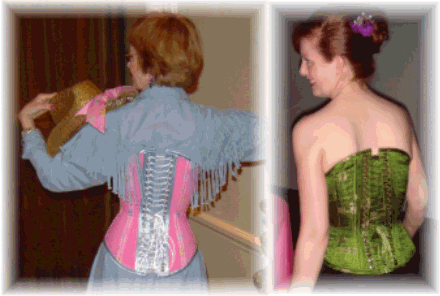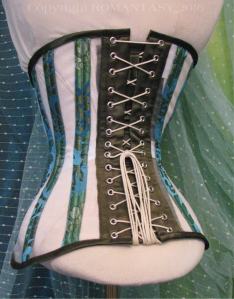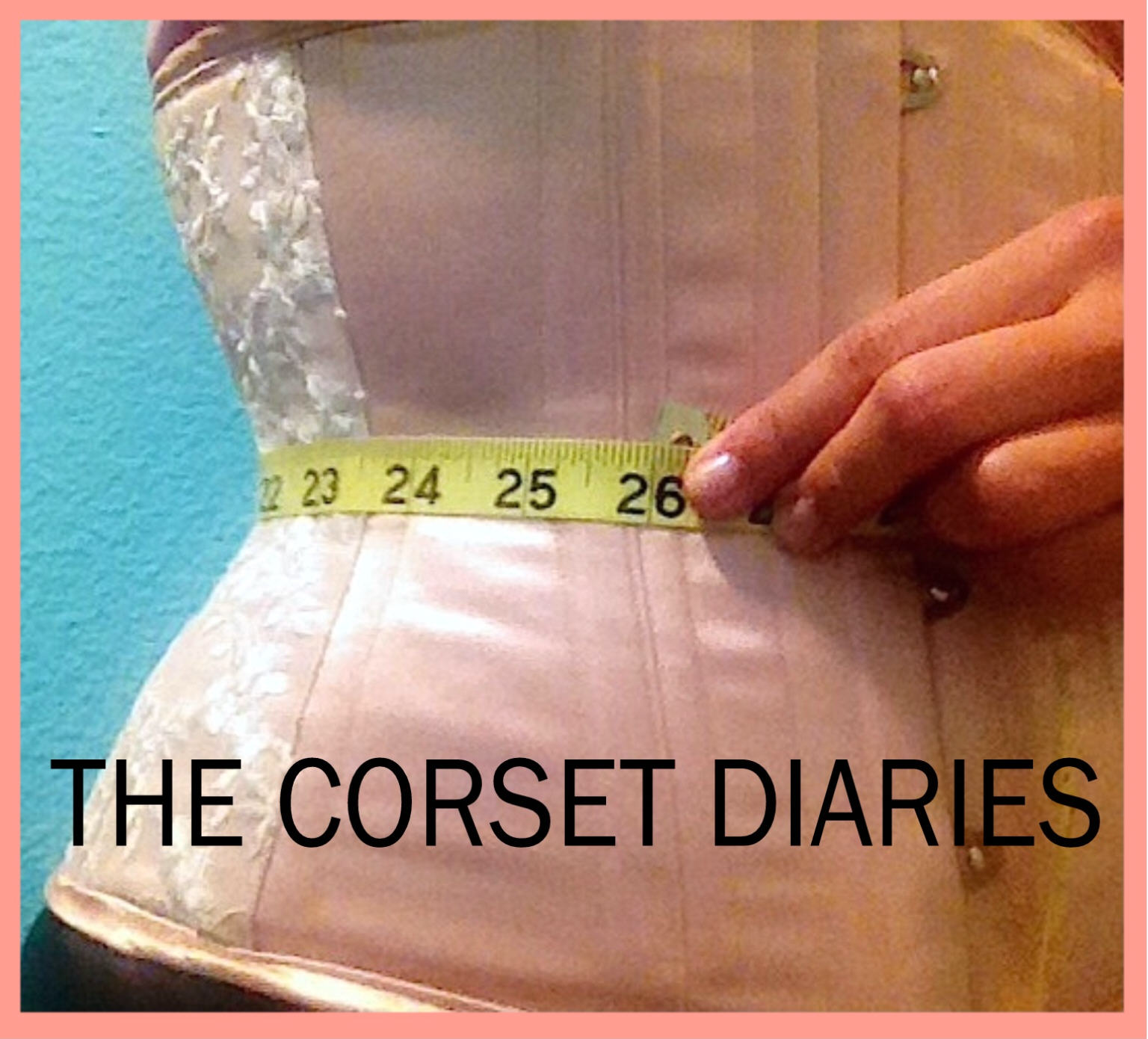I believe that the most immediate, and perhaps most beneficial, result of wearing corsets and corset waist training, is improved posture. So is the result of the Alexander Technique–the topic of today’s blog.
It is only after some months of dedicated corset wearing, coupled with corset-friendly nutrition practices and waist-targeted exercises, that temporary figure improvement can be converted into permanent figure improvement — if you then don’t pig out on Krispy Kreme donuts and revert to dubious nutritional practices. After all, we have to use common sense when it comes to corseting, as in all other matters of life!
Recently I’ve started learning about and pursuing lessons in the Alexander Technique (“AT”). My immediate motivation relates to a lingering whiplash cervical injury given to me by a particularly incompetent Chinese wife of my Chinese acupunturist, sad to say. In a moment of pain and depression from a lingering low back muscle spasm, last November I allowed her to manipulate my spine and neck before acupuncture– and three days later, just as with a car accident, the neck injury appeared. I should have known better, but I was too vulnerable. I’m still seeking relief and recovery, which is coming all too slowly for my taste.
Raven, my great friend and web mistress, only a few weeks ago found a video on the Alexander Technique, and “felt” it was for me. I’ve considered cold laser threatment, Feldenkrais, and other. I’ve pursued competent physical therapy, and started swimming three times a week at my warm rehab pool (such a blessing to have the Pomeroy Center in San Francisco!). I’m still not 100% and my neck causes me from mild to serious pain or discomfort every day.
When I viewed the video on the AT that Raven sent a link to, and a few others on the technique, I was gobsmacked. Something seemed to resonate with me about AT theory and practice. I particularly loved it when a local San Francisco AT therapist, in describing the technique and practice, called it: “the thinking person’s physical therapy.”
Like the AT, corset waist training, to be both effective and safe, requires advance thinking and understanding of the whys and hows of what you are doing. That’s why I wrote my initial (600 page equivalent) book in 2003 Corset Waist Training, and updated it substantially with new information, in my Primer book from 2016 (300 pages). But in some ways, the corset and corset waist training, does not go far enough — and there’s where the AT comes in.
The corset, much akin to how a physical therapist or gym trainer works, changes the form of the body, but there’s not too much advance thinking involved, and usually, not much discussion or study from those who jump right in. Sure, there is the “right form” advisable for physical exercises so that we don’t injure ourselves inadvertently. I talk a lot about that in my exercise chapter from the new 2016 corset waist-training book. Starting with the “TVA” squeeze or “set” of that important waistline muscle, minimized injury risks in many exercises. My own wonderful Kaiser PT Matt Sheehy, made sure to teach me the “right” form for my back rehab exercises, however those sessions were only 30 min. long (curse the state of the US health care system) and there was limited time to be sure I knew what I was doing. There was almost never the time to find out “why” I was being asked to do what. Had there been more discussion, then I could have gone off and reflected deeply about those reasons. For me, that’s the way I cement new learning into my body, mind and soul, otherwise it is too easy to just slip away outside of my PT’s office.
If you wear corsets to protect your back from further or new injury, to improve your posture and fit of clothing, and/or to waist train, you might want to look into the Alexander Technique which I believe can be practiced effectively and beneficially in tandem with corseting. Check out this post based on the the AT, and an important mid-page photo showing improper and proper sitting posture.
“Posture isn’t just physical. It’s a psychophysical (mind/body) state that we get into in response to our environment, technology, emotions, furniture, and people with whom we interact. It’s easy to get stuck in these habits and then metaphorically spin in circles trying to get out of them. We can make things worse by trying to fix them in away that intensifies the exact habits that we are trying to change (i.e. The lifting the chest and pulling the shoulders back phenomenon.)”
I was gobsmacked to learn from my talented, amazing local AT therapist. Elyse Shafarman, that unless we think about posture and take ameliorative steps to re-learn correct, non-stressful body habits, we merely take on and reflect, the poor posture of others. “We are social animals,” Elyse says, and we unconsciously pick up on not only the energy and spirit of others–but also how they look and move throughout their day.
I was also gobsmacked to learn form Elyse, that good posture does not mean throwing our shoulders and head up and back! It’s almost the opposite in the AT: the top of the head is “thought” to rise up a wee bit, the chin slightly (ever so slightly) down and the head almost “bobbles” easily on the neck, gently stretching out the cervical spine and elevating the entire spine. At the same time, the shoulder blades are “thought” to expand outward, and I have to learn not to squeeze my scapula, AKA “chicken wings”, backward.
But of course, there’s more — much more to AT, and for me to learn. After all, two lessons does not an AT expert make!
As I’ve been practicing these techniques and new thoughts for the past two weeks during my twice-daily walks, I’ve noticed that as soon as I think of spreading out or widening my shoulder blades, I always notice that my shoulders have automatically hunched up! While my cincher or corset worn on some days, tends to keep my midriff erect and protected, it does nothing to protect or alleviate discomfort in my shoulders and neck.
Even my high-backed corset (there are two or mine pictured, first the white corset mesh with green and blue patterned bone casings, and above, the hot pink denim corset; the green high-backed corsets is modeled by corsetiere Sue Nice’s sister), at 10″ and 9″ from waist up to top in the back, can only do so much to alleviate neck discomfort and improve posture. Lingerie-style support bodices that promise to hold back the shoulders, also seem to “cut” under my armpits in the most uncomfy of ways.
I’ll post more on what I learn and observe over the coming weeks. If you have studied the AT, I’d love to hear from you as to what you noted, and the results of your practice.








